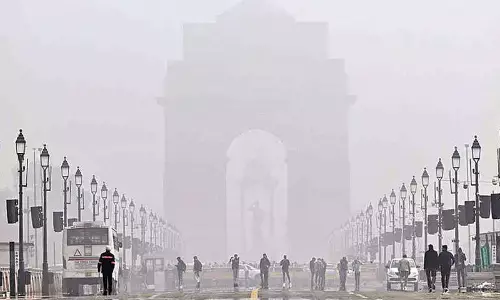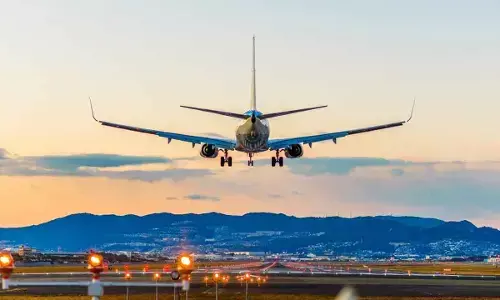India’s economic journey has been a chequered one since October 2011

S&P Global Ratings anticipates the GDP to grow by 6.4% in FY24
On October 20, 2011, former Governor of Reserve Bank of India (RBI) and then chairman of Prime Minister’s Economic Advisory Council (PMEAC) Dr. C. Rangarajan addressed the Economic Editors’ Conference, which I also attended, covering the event for a prestigious news agency. We were provided a four-page sheet, containing the talking points of Dr. Rangarajan. The sheets are still with me. It was broadly about the status of the economy at that point in time and the road ahead.
According to Dr. Rangarajan, India had achieved 7.3 per cent economic growth over the last decade with the external payments situation in general comfortable. The growth rate between 1981-82 and 1990-91 was 5.6 per cent; between 1992-93 and 2009-10 6.81 per cent and between 2005-06 and 2010-11, 8.6 per cent. The per capita gross domestic product (GDP) had been pegged at seven per cent. During 2010-11, the growth rate in the agriculture sector was pegged at 6.6 per cent, manufacturing 8.3 per cent and services 9.4 per cent.
Talking about challenges, Dr. Rangarajan had spoken about widening current account deficit (CAD), sustaining the growth rate, translating growth into poverty reduction, expanding employment opportunities, improving productivity, improving the living standards and producing a coherent pattern of development. He also spoke about the fact that development has many dimensions and India can grow at nine per cent as broad macro-economic parameters such as savings rate having crossed 34 per cent of GDP and investment rate exceeding 36 per cent are conducive for higher growth rate.
On January 31, 2023, Union Finance Minister Nirmala Sitharaman, presented the Economic Survey 2022-23 in the Parliament. As per the survey, India’s GDP growth is expected to remain robust in FY24 with the forecast for FY24 to be in the range of 6-6.8 per cent. Similarly, the capital expenditure of central government and crowding in the private capex led by strengthening of the balance sheets of the corporates was seen as one of the growth drivers of the Indian economy in the current year.
The survey also said that the credit growth to the MSME sector was over 30.6 per cent on average during January-November 2022, while the retail inflation is back within the RBI’s target range in November 2022. Direct tax collections for the period April-November 2022 remain buoyant. The survey pointed out that enhanced employment generation was seen in the declining urban unemployment rate and in the faster net registration in Employee Provident Fund, and economic growth would be boosted from the expansion of public digital platforms and measures to boost manufacturing output.
S&P Global Ratings now anticipates India’s GDP to grow by 6.4 per cent in FY24, an upward adjustment from the previous estimate of 6 per cent. The projection marginally deviates from the government and the RBI’s 6.5 percent expectation but aligns with benchmarks set by various other agencies. It has, however, reduced its GDP growth projection for India in the FY25 to 6.4 per cent, marking a decline from the earlier forecast of 6.9 per cent. The adjustment is based on the expectation of a slowdown in the latter half of the year, influenced by factors such as muted global economic growth, an elevated baseline, and the delayed impact of interest rate hikes implemented by the RBI.
So, the growth rate in the range of 8 per cent to 9 per cent does not seem to be a possibility in the near future. That is certainly a matter of concern but not a reason to ring the alarm bell. However, the powers-that-be and policy makers need to look into the gaps and lapses if any to further accelerate the country’s economic growth.
Despite having adopted a multifaceted approach encompassing various sectors and policy measures, the desired results are elusive and we need to find out the loose ends. Public and private investment in infrastructure development is crucial. It not only enhances connectivity but also lays the foundation for a robust economy. Improving the ease of doing business by streamlining bureaucratic processes and reducing red tape can attract both domestic and foreign investment, fostering entrepreneurship and job creation.
Similarly, prioritizing education and skill development initiatives ensures a well-equipped workforce capable of driving innovation and productivity. Implementing technology-driven solutions and encouraging digitalization can enhance efficiency across sectors. Furthermore, promoting inclusive growth by addressing income inequality, supporting small and medium enterprises, and focusing on rural development can create a more balanced and sustainable economic landscape. Finally, maintaining fiscal discipline, implementing sound monetary policies, and fostering a business-friendly environment contribute to macroeconomic stability, attracting investments and spurring economic growth in the long term.
We need to note that subdued economic growth in a developing country like India can have far-reaching repercussions across various facets of society. One of the primary concerns is its impact on employment opportunities, as slower growth often translates into fewer job opportunities, particularly for the burgeoning youth population. This can lead to increased unemployment rates and underemployment, exacerbating issues related to poverty and income inequality.
Slower growth may also hinder progress in critical sectors such as education and healthcare, limiting the government’s capacity to invest in infrastructure and social welfare programs. Inadequate economic growth can impede poverty reduction efforts, hindering the nation’s ability to uplift marginalized communities and improve living standards. Moreover, subdued growth may adversely affect foreign direct investment, as investors may be hesitant to commit resources in an environment with limited economic dynamism.
The consequences of low growth also extend to global competitiveness, with a slower-growing economy potentially lagging behind in technological advancements and innovation. Sluggish growth can also strain public finances, limiting the government’s ability to invest in essential services and infrastructure.
The repercussions of moderate economic growth beyond a point in our country encompass a wide range of socioeconomic challenges, impacting livelihoods, access to basic services, and the nation’s overall development trajectory.
India’s economic journey from October 2011 onwards offers more than what meets the eye.













